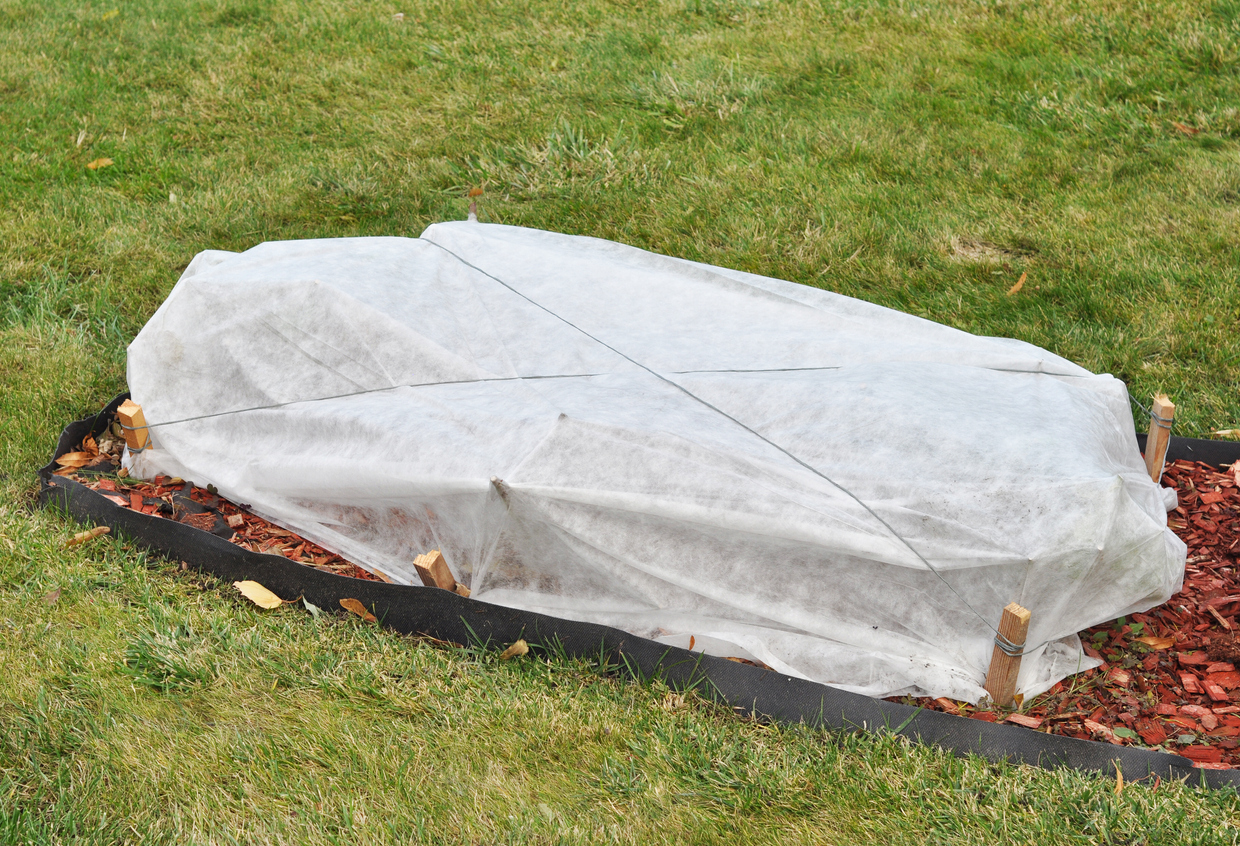Winter means something different if you live in New England than if you live in southern California. But no matter where you live, when the temperature drops, your outside plants could use a little extra care if they’re going to survive. Covering plants for winter isn’t all that challenging, generally, but there are some pretty common mistakes that will leave you with a garden full of dead stalks and stems.
Discover 10 top tips for growing, harvesting, and enjoying fruits, vegetables, herbs and more from your home garden—when you access the FREEBIE How to Grow a Vegetable Garden, right now!
5 Common mistakes gardeners make when they’re covering plants for winter
1. Waiting too long. I can’t tell you how many times I’ve made this mistake. An unexpected cold snap can freeze a plant quickly, and if you aren’t ready for it, well, there’s always next year. Seriously, though, I’ve learned that I have to get myself ready long before there’s even the potential for frost. That gives me plenty of time to prep my garden when I see those low temperatures in the forecast. I make sure I have all the supplies I need, and I store them in an easily accessible section of my shed.
2. Using the wrong covering. There are a multitude of materials you can use for covering plants for winter, from burlap to plastic to polypropylene. Not all covers have the same benefits, though. Some thicker polypropylene covers will protect plants down to 24 degrees, while thinner covers are only helpful to around 28 degrees.
3. Not watering your plants. Watering your plants when freezing temperatures are on the way would be a bad idea. That would just create more opportunities for ice to form and kill the plants. But water helps the soil retain heat and it helps your plants stay healthy. This doesn’t mean that you should water your garden right before it freezes. Rather, pay attention to the forecast and water them thoroughly, giving the plants and soil enough time to absorb the water before the temperature drops. Then cover them.
Discover 10 top tips for growing, harvesting, and enjoying fruits, vegetables, herbs and more from your home garden—when you access the FREEBIE How to Grow a Vegetable Garden, right now!
4. Leaving plants outside. Obviously, you aren’t going to bring your blackberry bush inside, but if you can bring your container plants in, go for it.
5. Not paying attention to snowfall. While snow can be a good insulator, if you’re covering your plants for winter, and you get a wet snowfall, it could be heavy enough to cave your coverings in and crush your plants. This means that, if you live in an area where you get heavy snowfall, you’ll need to construct a sturdier frame.
Bonus Tip: Before you cover your plants, clean up around them. Get rid of weeds, and pay special attention to removing any plants that may be harboring diseases. Add a two-inch layer of mulch to help the soil hold in heat and moisture.
Don’t forget to take care of yourself when you’re done covering plants for winter. I like to reward myself with a glass of wine and a cozy seat by the fireplace!
What is the worst mistake you’ve made with prepping your plants for winter? Share your experience in the comments below.
Discover 10 top tips for growing, harvesting, and enjoying fruits, vegetables, herbs and more from your home garden—when you access the FREEBIE How to Grow a Vegetable Garden, right now!

One reply on “5 Ways Covering Plants for Winter Often Fails (And How to Do it Right)”
I live in Lapine Oregon I get quite a bit of snow and the ground freezes I am losing a lot of plants in the winter, but I’m working on it can you help me?